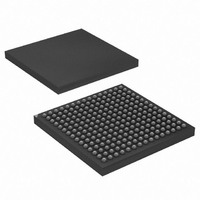AT91CAP7E-NA-ZJ Atmel, AT91CAP7E-NA-ZJ Datasheet - Page 356

AT91CAP7E-NA-ZJ
Manufacturer Part Number
AT91CAP7E-NA-ZJ
Description
MCU CAP7 FPGA 225LFBGA
Manufacturer
Atmel
Series
CAP™r
Specifications of AT91CAP7E-NA-ZJ
Core Processor
ARM7
Core Size
16/32-Bit
Speed
80MHz
Connectivity
EBI/EMI, FPGA, IrDA, SPI, UART/USART, USB
Peripherals
DMA, POR, PWM, WDT
Number Of I /o
32
Program Memory Size
256KB (256K x 8)
Program Memory Type
ROM
Ram Size
160K x 8
Voltage - Supply (vcc/vdd)
1.08 V ~ 1.32 V
Data Converters
A/D 8x10b
Oscillator Type
Internal
Operating Temperature
-40°C ~ 85°C
Package / Case
225-LFBGA
Processor Series
AT91Mx
Core
ARM7TDMI
Data Bus Width
32 bit
3rd Party Development Tools
JTRACE-ARM-2M, MDK-ARM, RL-ARM, ULINK2
Lead Free Status / RoHS Status
Lead free / RoHS Compliant
Eeprom Size
-
Lead Free Status / Rohs Status
Details
Available stocks
Company
Part Number
Manufacturer
Quantity
Price
- Current page: 356 of 520
- Download datasheet (11Mb)
Figure 29-11. Bit Resynchronization
29.6.3.3
356
AT91CAP7E
Asynchronous Receiver
Oversampling
Sampling
16x Clock
If the USART is programmed in asynchronous operating mode (SYNC = 0), the receiver over-
samples the RXD input line. The oversampling is either 16 or 8 times the Baud Rate clock,
depending on the OVER bit in the Mode Register (US_MR).
The receiver samples the RXD line. If the line is sampled during one half of a bit time at 0, a start
bit is detected and data, parity and stop bits are successively sampled on the bit rate clock.
If the oversampling is 16, (OVER at 0), a start is detected at the eighth sample at 0. Then, data
bits, parity bit and stop bit are sampled on each 16 sampling clock cycle. If the oversampling is 8
(OVER at 1), a start bit is detected at the fourth sample at 0. Then, data bits, parity bit and stop
bit are sampled on each 8 sampling clock cycle.
The number of data bits, first bit sent and parity mode are selected by the same fields and bits
as the transmitter, i.e. respectively CHRL, MODE9, MSBF and PAR. For the synchronization
mechanism only, the number of stop bits has no effect on the receiver as it considers only one
stop bit, regardless of the field NBSTOP, so that resynchronization between the receiver and the
transmitter can occur. Moreover, as soon as the stop bit is sampled, the receiver starts looking
for a new start bit so that resynchronization can also be accomplished when the transmitter is
operating with one stop bit.
Figure 29-12
operates in asynchronous mode.
point
RXD
and
Synchro.
Figure 29-13
Error
Synchro.
Jump
illustrate start detection and character reception when USART
Expected edge
Tolerance
Jump
Sync
Synchro.
Error
8549A–CAP–10/08
Related parts for AT91CAP7E-NA-ZJ
Image
Part Number
Description
Manufacturer
Datasheet
Request
R

Part Number:
Description:
Customizable Microcontroller
Manufacturer:
ATMEL Corporation
Datasheet:

Part Number:
Description:
DEV KIT FOR AVR/AVR32
Manufacturer:
Atmel
Datasheet:

Part Number:
Description:
INTERVAL AND WIPE/WASH WIPER CONTROL IC WITH DELAY
Manufacturer:
ATMEL Corporation
Datasheet:

Part Number:
Description:
Low-Voltage Voice-Switched IC for Hands-Free Operation
Manufacturer:
ATMEL Corporation
Datasheet:

Part Number:
Description:
MONOLITHIC INTEGRATED FEATUREPHONE CIRCUIT
Manufacturer:
ATMEL Corporation
Datasheet:

Part Number:
Description:
AM-FM Receiver IC U4255BM-M
Manufacturer:
ATMEL Corporation
Datasheet:

Part Number:
Description:
Monolithic Integrated Feature Phone Circuit
Manufacturer:
ATMEL Corporation
Datasheet:

Part Number:
Description:
Multistandard Video-IF and Quasi Parallel Sound Processing
Manufacturer:
ATMEL Corporation
Datasheet:

Part Number:
Description:
High-performance EE PLD
Manufacturer:
ATMEL Corporation
Datasheet:

Part Number:
Description:
8-bit Flash Microcontroller
Manufacturer:
ATMEL Corporation
Datasheet:

Part Number:
Description:
2-Wire Serial EEPROM
Manufacturer:
ATMEL Corporation
Datasheet:











